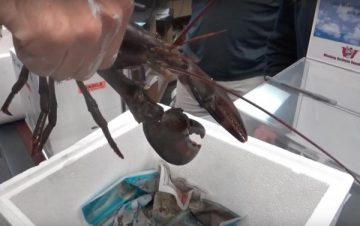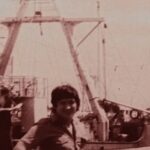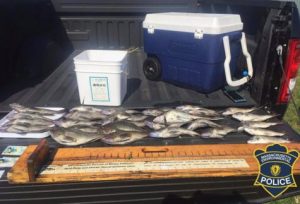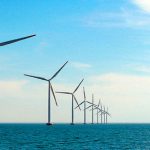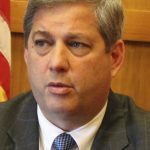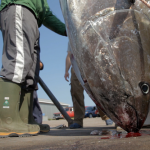Monthly Archives: June 2016
South Atlantic: Move surfaces to overhaul red snapper restrictions, limits
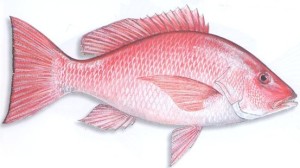 Following the recent announcement that anglers will continue to be prohibited from keeping red snapper in the Atlantic Ocean this year, a member of the regional council that oversees fishing in the Southeast’s federal waters wants to overhaul how the species is regulated. Ben Hartig, a commercial fisherman from Hobe Sound, sent a letter last week to members of the South Atlantic Fishery Management Council that said current regulations are based on unreliable information about the red snapper population and number of fish caught. Hartig proposed a range of possible changes to the years-long, controversial plan in place to help increase the species’ numbers that, if pursued by the council, could go into place as early as 2018. Read the rest here 10:24
Following the recent announcement that anglers will continue to be prohibited from keeping red snapper in the Atlantic Ocean this year, a member of the regional council that oversees fishing in the Southeast’s federal waters wants to overhaul how the species is regulated. Ben Hartig, a commercial fisherman from Hobe Sound, sent a letter last week to members of the South Atlantic Fishery Management Council that said current regulations are based on unreliable information about the red snapper population and number of fish caught. Hartig proposed a range of possible changes to the years-long, controversial plan in place to help increase the species’ numbers that, if pursued by the council, could go into place as early as 2018. Read the rest here 10:24
F/V Northern Leader to be profiled on Discovery’s “Mighty Ships” Series
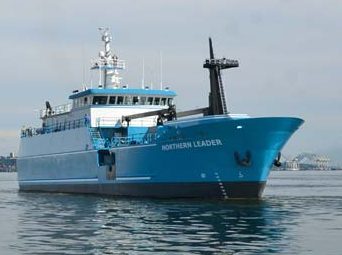 Demonstrating enviable efficiency, F/V Northern Leader of Kodiak will take a star turn on the popular “Mighty Ships” cable TV program. “Mighty Ships” producers search for unique ships around the world. Its seven-year run has featured a range of vessels including cruise ships, aircraft carriers, cargo ships, dredgers and more. The programs focus on the operational capabilities and technical aspects of the ships while making use of computer-generated animation to show underwater operations. What attracted them to the 184-foot freezer-longliner Northern Leader is its joystick-controlled, eco-friendly propulsion system that runs on electricity — the first U.S. fishing vessel to do so — and its head-to-tail use of the fish it catches. The 3-year-old Northern Leader fishes primarily for Bering Sea cod. Says Discovery: “Catching fish with hooks, not nets, she sends out 80 kilometers of fishing line containing 76,000 hooks. In the heart of the Bering Sea, her crew battles a hurricane with 13-meter-high waves and winds of more than 100 kilometers per hour.” Read the rest here 13:54
Demonstrating enviable efficiency, F/V Northern Leader of Kodiak will take a star turn on the popular “Mighty Ships” cable TV program. “Mighty Ships” producers search for unique ships around the world. Its seven-year run has featured a range of vessels including cruise ships, aircraft carriers, cargo ships, dredgers and more. The programs focus on the operational capabilities and technical aspects of the ships while making use of computer-generated animation to show underwater operations. What attracted them to the 184-foot freezer-longliner Northern Leader is its joystick-controlled, eco-friendly propulsion system that runs on electricity — the first U.S. fishing vessel to do so — and its head-to-tail use of the fish it catches. The 3-year-old Northern Leader fishes primarily for Bering Sea cod. Says Discovery: “Catching fish with hooks, not nets, she sends out 80 kilometers of fishing line containing 76,000 hooks. In the heart of the Bering Sea, her crew battles a hurricane with 13-meter-high waves and winds of more than 100 kilometers per hour.” Read the rest here 13:54
The domino effect. Fisheries policy raising the carapace measure risks dividing fishermen
 The domino effect. That’s sort of what lobster fishermen in P.E.I. are up against after the Federal Fisheries Department decided the carapace measure has to go up in Lobster Fishing Area 25. Prince Edward Island’s 225 fall fishermen share Northumberland Strait’s LFA 25 with 470 New Brunswick boats and 16 from Nova Scotia. It’s a narrow strip of water, so it’s impossible to draw a line through the middle of it and keep the Island boats on one side of the line and leave the other side to the mainlanders. Despite fishing the same body of water, the fishermen on either side of the puddle – or at least the organizations representing them – have opposing views on what the minimum carapace size should be. Read the op-ed here 11:58
The domino effect. That’s sort of what lobster fishermen in P.E.I. are up against after the Federal Fisheries Department decided the carapace measure has to go up in Lobster Fishing Area 25. Prince Edward Island’s 225 fall fishermen share Northumberland Strait’s LFA 25 with 470 New Brunswick boats and 16 from Nova Scotia. It’s a narrow strip of water, so it’s impossible to draw a line through the middle of it and keep the Island boats on one side of the line and leave the other side to the mainlanders. Despite fishing the same body of water, the fishermen on either side of the puddle – or at least the organizations representing them – have opposing views on what the minimum carapace size should be. Read the op-ed here 11:58
Fisheries Minister Dominic LeBlanc says increasing the minimum lobster size balances sustainability, economic benefits.
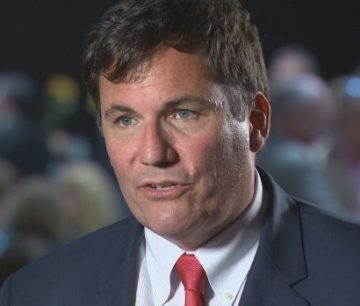 A decision to increase the minimum size for lobsters caught in the western end of the Northumberland Strait will not be changed by the new fisheries minister. Dominic LeBlanc — MP for the riding of Beauséjour in New Brunswick — took over the portfolio when Hunter Tootoo resigned Tuesday to seek treatment for addiction. P.E.I. fishermen and others have questioned Tootoo’s recent decision to increase carapace size for Lobster Fishing Area 25. LeBlanc, who was taking questions from reporters in New Brunswick Thursday, said the decision will not be reversed and it is time to move on to other issues. Read the rest here 09:28
A decision to increase the minimum size for lobsters caught in the western end of the Northumberland Strait will not be changed by the new fisheries minister. Dominic LeBlanc — MP for the riding of Beauséjour in New Brunswick — took over the portfolio when Hunter Tootoo resigned Tuesday to seek treatment for addiction. P.E.I. fishermen and others have questioned Tootoo’s recent decision to increase carapace size for Lobster Fishing Area 25. LeBlanc, who was taking questions from reporters in New Brunswick Thursday, said the decision will not be reversed and it is time to move on to other issues. Read the rest here 09:28
The NOAA Drones! Unmanned vessels deployed for Alaska ocean research
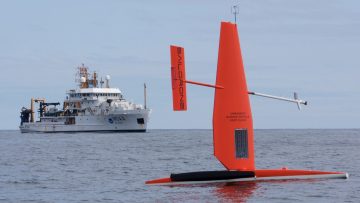 Researchers in the Bering Sea off Alaska’s west coast will get help this summer from drones, but not the kind that fly. The NOAA and private researchers are gathering data on marine mammals, fish and ocean conditions from two “autonomous sailing vessels” built by Saildrone, an Alameda, California, company. “Think of a 20-foot outrigger canoe with an airplane wing sticking up from the middle,” said Chris Sabine, director of NOAA’s Pacific Marine Environmental Lab, at a press teleconference Friday. They hold great appeal for researchers because they’re far cheaper to operate than research ships and they can work in dangerous conditions of the North Pacific. Researchers will use the vessels to gather information on pollock, an important species for commercial fishermen and the main prey of northern fur seals, a species that has declined. Instruments on board also will collect oceanographic data used to track environmental changes. Read the rest here 22:48
Researchers in the Bering Sea off Alaska’s west coast will get help this summer from drones, but not the kind that fly. The NOAA and private researchers are gathering data on marine mammals, fish and ocean conditions from two “autonomous sailing vessels” built by Saildrone, an Alameda, California, company. “Think of a 20-foot outrigger canoe with an airplane wing sticking up from the middle,” said Chris Sabine, director of NOAA’s Pacific Marine Environmental Lab, at a press teleconference Friday. They hold great appeal for researchers because they’re far cheaper to operate than research ships and they can work in dangerous conditions of the North Pacific. Researchers will use the vessels to gather information on pollock, an important species for commercial fishermen and the main prey of northern fur seals, a species that has declined. Instruments on board also will collect oceanographic data used to track environmental changes. Read the rest here 22:48
NT trawler electrocution death referred to prosecutors
 A commercial fishing company and government regulators have been savaged over abysmal health and safety failures that led to the electrocution of a man on a prawn trawler. Ryan Donoghue, 20, was hit by a wave while using an angle grinder, not protected by a safety switch, on a trawler fishing in the Gulf of Carpentaria, in November 2013. In his inquest findings, Northern Territory coroner Greg Cavanagh referred the death to prosecutors and police, saying offences may have been committed. The workplace on board the Austral Fisheries-owned Newfish1 vessel was unsafe and dangerous and resulted in Mr Donoghue’s death, the Judge Cavanagh said on Friday. It also highlighted the “shameful” state of safety on a large number of fishing vessels. “The death of Ryan Donoghue was needless and a tragic waste of a young life,” the judge said. Read the rest here 19:59
A commercial fishing company and government regulators have been savaged over abysmal health and safety failures that led to the electrocution of a man on a prawn trawler. Ryan Donoghue, 20, was hit by a wave while using an angle grinder, not protected by a safety switch, on a trawler fishing in the Gulf of Carpentaria, in November 2013. In his inquest findings, Northern Territory coroner Greg Cavanagh referred the death to prosecutors and police, saying offences may have been committed. The workplace on board the Austral Fisheries-owned Newfish1 vessel was unsafe and dangerous and resulted in Mr Donoghue’s death, the Judge Cavanagh said on Friday. It also highlighted the “shameful” state of safety on a large number of fishing vessels. “The death of Ryan Donoghue was needless and a tragic waste of a young life,” the judge said. Read the rest here 19:59
NOAA rejected New Bedford for its Northeast Fisheries Science Center. Why? It makes too much sense!
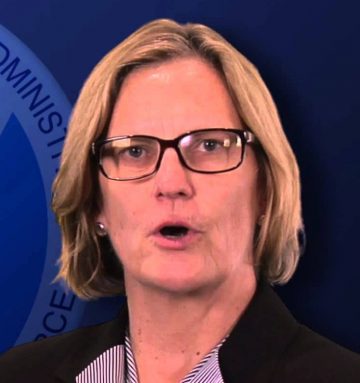 It is no surprise that NOAA has rejected New Bedford as the new site for its Northeast Fisheries Science Center. It makes too much sense. New Bedford Harbor is where it happens for the federal agency, with the heart of the East Coast fishery right here. There is deep-water berthing for its research vessels right here. UMass Dartmouth’s School for Marine Science and Technology, a premiere oceanographic institution, is right here. There are acres of available land both on and nearby the waterfront right here in New Bedford. There are hundreds of fishing vessels that can participate in joint research efforts right here. There is major highway, rail, and regional airport access right here. No, it makes too much sense to move to New Bedford. National Oceanic and Atmospheric Administration officials would rather live and work on Cape Cod, even though their facility is over-crowded, real estate prices are at a premium, and the lack of a sizable berth forces them to dock their research vessel in Newport, Rhode Island. Leave it to a federal agency to choose a more expensive and inefficient means of operation. Leave it to a federal agency to be politically influenced to not choose the best situated, most affordable, and sensible location with the best infrastructure for their new expanded facility. Davis Sullivan, Rochester Link 18:15
It is no surprise that NOAA has rejected New Bedford as the new site for its Northeast Fisheries Science Center. It makes too much sense. New Bedford Harbor is where it happens for the federal agency, with the heart of the East Coast fishery right here. There is deep-water berthing for its research vessels right here. UMass Dartmouth’s School for Marine Science and Technology, a premiere oceanographic institution, is right here. There are acres of available land both on and nearby the waterfront right here in New Bedford. There are hundreds of fishing vessels that can participate in joint research efforts right here. There is major highway, rail, and regional airport access right here. No, it makes too much sense to move to New Bedford. National Oceanic and Atmospheric Administration officials would rather live and work on Cape Cod, even though their facility is over-crowded, real estate prices are at a premium, and the lack of a sizable berth forces them to dock their research vessel in Newport, Rhode Island. Leave it to a federal agency to choose a more expensive and inefficient means of operation. Leave it to a federal agency to be politically influenced to not choose the best situated, most affordable, and sensible location with the best infrastructure for their new expanded facility. Davis Sullivan, Rochester Link 18:15
ADF&G says its up to fishermen to avoid problems with walrus hauling out near Ugashik north line
 The new walrus haul out at Cape Greig in Bristol Bay could create some problems for the Ugashik and Egegik salmon fishing districts. But right now the Department of Fish and Game says they’ll start the fishery business-as-usual. While a new, more accessible walrus haul out might be welcome by some, that spot is awfully close to the boundaries of the Ugashik commercial fishing district. The Dept. of Fish and Game area management biologist for Ugashik and Egegik is Paul Salomone has been looking at pictures of the haul out over the past month or so. That could be a problem in one of the busiest, most crowded fisheries in the state. Last July, when the fishing in Ugashik got hot, there were over 300 Bristol Bay drift permits registered to fish there. Just north of that district, even more fishermen keep their nets wet in the Egegik district. Audio, Read the rest here 15:38
The new walrus haul out at Cape Greig in Bristol Bay could create some problems for the Ugashik and Egegik salmon fishing districts. But right now the Department of Fish and Game says they’ll start the fishery business-as-usual. While a new, more accessible walrus haul out might be welcome by some, that spot is awfully close to the boundaries of the Ugashik commercial fishing district. The Dept. of Fish and Game area management biologist for Ugashik and Egegik is Paul Salomone has been looking at pictures of the haul out over the past month or so. That could be a problem in one of the busiest, most crowded fisheries in the state. Last July, when the fishing in Ugashik got hot, there were over 300 Bristol Bay drift permits registered to fish there. Just north of that district, even more fishermen keep their nets wet in the Egegik district. Audio, Read the rest here 15:38
Former Navy ship embarks on new career catching and processing fish off Alaska
 Seattle’s fishing industry on Thursday feted the latest addition to the fleet, a 233-foot former Navy oceanographic vessel overhauled at a cost of more than $30 million for a new line of work — catching and processing fish off Alaska. The Lake Union ceremony drew several hundred people to watch the traditional breaking of a Champagne bottle across the bow of the former John McDonnell, newly christened as the Seafreeze America. Later this month, the ship will head north to harvest yellowfin sole and other species in the Bering Sea. In a Seattle increasingly swept up in a tech boom, the SeaFreeze Amercia offers a reminder of the vitality of an older and still potent Puget Sound industry. Read the rest here 14:49
Seattle’s fishing industry on Thursday feted the latest addition to the fleet, a 233-foot former Navy oceanographic vessel overhauled at a cost of more than $30 million for a new line of work — catching and processing fish off Alaska. The Lake Union ceremony drew several hundred people to watch the traditional breaking of a Champagne bottle across the bow of the former John McDonnell, newly christened as the Seafreeze America. Later this month, the ship will head north to harvest yellowfin sole and other species in the Bering Sea. In a Seattle increasingly swept up in a tech boom, the SeaFreeze Amercia offers a reminder of the vitality of an older and still potent Puget Sound industry. Read the rest here 14:49
Nigel Farage to lead 60-boat armada up Thames in call for Brexit
 The Ukip leader revealed he will lead the fleet on a “small trawler” with Eurosceptic fishermen in protest against EU fishing quotas. Mr Farage told LBC Radio: “On June 15 I will be boarding a small trawler in Southend-on-Sea at 5am, so not much point going to bed really, and we will catch the flood tide, and there will be 60 boats in a flotilla coming up the Thames and we will arrive outside the Palace of Westminster at midday. “It will be big, visual and dramatic, and the demand will be clear – we want our waters back. “It’ll be commercial fishermen from all over, mostly from the east coast of England but some coming from further afield and if other political figures have got the stomach for it then they are very welcome to come and join me. Read the rest here 13:50
The Ukip leader revealed he will lead the fleet on a “small trawler” with Eurosceptic fishermen in protest against EU fishing quotas. Mr Farage told LBC Radio: “On June 15 I will be boarding a small trawler in Southend-on-Sea at 5am, so not much point going to bed really, and we will catch the flood tide, and there will be 60 boats in a flotilla coming up the Thames and we will arrive outside the Palace of Westminster at midday. “It will be big, visual and dramatic, and the demand will be clear – we want our waters back. “It’ll be commercial fishermen from all over, mostly from the east coast of England but some coming from further afield and if other political figures have got the stomach for it then they are very welcome to come and join me. Read the rest here 13:50
“Them God Damned Seals” by The Canadian Beaver Band
 Between the propaganda and hate from the likes of HSUS, IFAW, Greenpeace, PETA, Paul Watson and a variety of other anti-seal hunt nutbars, comes this love song. I didn’t pick the thumbnail. YouTube chose it for me. Can’t wait til you-know-who sees it. Watch the video here. It’s catchy! 10:23
Between the propaganda and hate from the likes of HSUS, IFAW, Greenpeace, PETA, Paul Watson and a variety of other anti-seal hunt nutbars, comes this love song. I didn’t pick the thumbnail. YouTube chose it for me. Can’t wait til you-know-who sees it. Watch the video here. It’s catchy! 10:23Mattituck Commercial fisherman pleads in illegal fishing scheme
 A commercial fisherman from Mattituck pleaded guilty Thursday to falsifying documents and lying to investigators in connection with a 2011 scheme to illegally harvest fish valued at $78,000, authorities said. James Kaminsky, 74, “systematically cover[ed] up the landing and sale of illegal fluke, scup and black sea bass that were overharvested” in violation of New York quotas and through abuse of a federal research program known as research set-aside, according to the Department of Justice. The scheme took place between May and August of 2011, authorities said. Research set-aside allows fishermen to harvest out of season and exceed quotas, but authorities have branded it a “license to steal” because it has allowed some overfishing without proper reporting. Read the rest here 08:56
A commercial fisherman from Mattituck pleaded guilty Thursday to falsifying documents and lying to investigators in connection with a 2011 scheme to illegally harvest fish valued at $78,000, authorities said. James Kaminsky, 74, “systematically cover[ed] up the landing and sale of illegal fluke, scup and black sea bass that were overharvested” in violation of New York quotas and through abuse of a federal research program known as research set-aside, according to the Department of Justice. The scheme took place between May and August of 2011, authorities said. Research set-aside allows fishermen to harvest out of season and exceed quotas, but authorities have branded it a “license to steal” because it has allowed some overfishing without proper reporting. Read the rest here 08:56
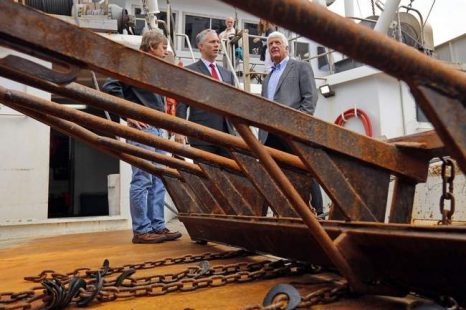
U.S. Rep. Rob Bishop visits New Bedford waterfront, speaks with industry reps
U.S. Rep. Rob Bishop, a Utah Republican and chairman of the House Committee on Natural Resources, visited the city to get a firsthand look at the highest-value commercial fishing port in the country. Numerous industry leaders from across the region took the opportunity to speak to the committee chairman, particularly about the push for national monument status in the New England Canyons and Seamounts, about 100 miles southeast of Cape Cod. Eric Reid, a general manager with Rhode Island frozen fish business Seafreeze, told Bishop during a noontime forum at the New Bedford Whaling Museum that economic impacts from monument status, which would restrict commercial fishing, could cost $500 million and “countless jobs.” Reid unfurled a map of ocean waters on a Whaling Museum table and pointed out to Bishop where he felt commercial fishing businesses could, and could not, survive if a monument status was put in place. Reid suggested a line of demarcation in the Canyons and Seamounts area, where bottom-fishing would be allowed north of the line but not to the south. “We can protect the industry, and we can protect the corals,” Reid said, urging that “pelagic” fishing, or fishing that occurs well above ocean floors, be allowed in both zones. Read the story here 23:33
Assaults on Fisheries Observers More than Double in Two Years with No Reported Enforcement
 Attacks against independent monitors of U.S. fishing fleets more than doubled between 2013 and 2015. That’s according to official figures posted today by the Association for Professional Observers (APO) and Public Employees for Environmental Responsibility (PEER). Last year, despite a record number of such assaults, the National Oceanic & Atmospheric Administration (NOAA) took no enforcement action in any case and more than half remain in “open” status – many for months. Approximately 700 observers monitor fleets in 47 different fisheries in U.S. waters, logging some 77,000 days at sea each year. Many are female and face particular challenges from all-male fishing crews on long voyages. Read the rest here 22:22
Attacks against independent monitors of U.S. fishing fleets more than doubled between 2013 and 2015. That’s according to official figures posted today by the Association for Professional Observers (APO) and Public Employees for Environmental Responsibility (PEER). Last year, despite a record number of such assaults, the National Oceanic & Atmospheric Administration (NOAA) took no enforcement action in any case and more than half remain in “open” status – many for months. Approximately 700 observers monitor fleets in 47 different fisheries in U.S. waters, logging some 77,000 days at sea each year. Many are female and face particular challenges from all-male fishing crews on long voyages. Read the rest here 22:22
Fundy Tidal tests on hold, more consultations to be held before turbine launch
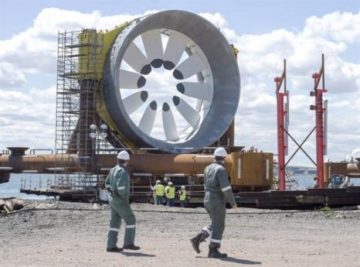 Cape Sharp Tidal has put the brakes on the deployment of its first turbine in the Bay of Fundy, originally set for this weekend so it can meet with concerned community members. Sarah Dawson, community relations manager with Cape Sharp Tidal told the Chronicle Herald Thursday that despite extensive outreach activities, there are still stakeholders in the region that feel like they have not been fully heard. “We are taking a pause to. . .hear from those who don’t feel like they have an opportunity. It’s important that we listen and we learn and we always learn from these sorts of engagements,” Dawson said in an interview. (then they’ll stick it in!) Dawson wouldn’t say how long they will be delaying the deployment. “It’s a positive step,” said Minas Basin weir fisherman Darren Porter. Read the rest here 19:05
Cape Sharp Tidal has put the brakes on the deployment of its first turbine in the Bay of Fundy, originally set for this weekend so it can meet with concerned community members. Sarah Dawson, community relations manager with Cape Sharp Tidal told the Chronicle Herald Thursday that despite extensive outreach activities, there are still stakeholders in the region that feel like they have not been fully heard. “We are taking a pause to. . .hear from those who don’t feel like they have an opportunity. It’s important that we listen and we learn and we always learn from these sorts of engagements,” Dawson said in an interview. (then they’ll stick it in!) Dawson wouldn’t say how long they will be delaying the deployment. “It’s a positive step,” said Minas Basin weir fisherman Darren Porter. Read the rest here 19:05
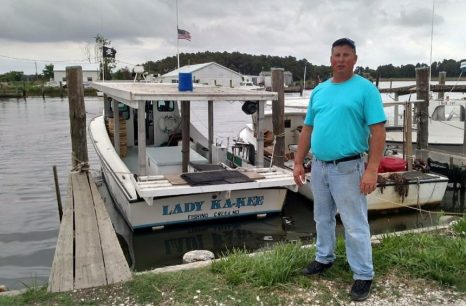
Fishermen Save Twenty-three people, including 14 kids, rescued from sinking boat in Chesapeake Bay
Jeremy Shockley heard the distress call come across the marine radio channel Wednesday as he and his son, Daniel, checked on their boat after catching crabs at a Chesapeake Bay marina on Maryland’s Eastern Shore. “Mayday. Mayday,” Shockley heard over the radio around 5:30 p.m. “Vessel taking on water.” He quickly surmised the coordinates being given and realized it was at Bloodsworth Island in Dorchester County, about 35 minutes north of his remote location in Wingate. “I hollared, ‘Let’s go get them,’” Shockley, 42, recalled Thursday. He, his son and two friends took off to help rescue the boat. But they didn’t realize as they raced in Shockley’s 36-foot boat exactly who they were about to save — 14 school-aged kids, five parent chaperones and a teacher, as well as two instructors and a captain from the Chesapeake Bay Foundation who were leading the educational trip on the area’s ecology. Read the rest here 18:20
Voters need to take action to save fishing industry – By Christian Putnam
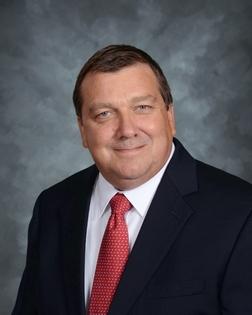 The federal government could take a page from Gov. Baker’s playbook when it comes to breaking through bureaucratic roadblocks and promoting efficiency. Instead the Obama administration created the National Ocean Policy in 2010 by executive order as a way to deal with the oceans and the future of commercial fishing. In 2012, an implementation plan was outlined, resulting in a 2016 work plan. The National Ocean Policy was billed as a process by which stakeholders could have more direct and immediate control over stewardship of the oceans and the resources within. Instead it has turned into a regulatory burden that requires the participation of many federal agencies, creating an extended process in reacting to changes in the environment and the needs of stakeholders, including the endangered New England Commercial Fisherman. After 40 years of the Magnuson-Stevens Act, it has become apparent that the federal government is just not that good at managing our fisheries resources. Read the rest here 17:38
The federal government could take a page from Gov. Baker’s playbook when it comes to breaking through bureaucratic roadblocks and promoting efficiency. Instead the Obama administration created the National Ocean Policy in 2010 by executive order as a way to deal with the oceans and the future of commercial fishing. In 2012, an implementation plan was outlined, resulting in a 2016 work plan. The National Ocean Policy was billed as a process by which stakeholders could have more direct and immediate control over stewardship of the oceans and the resources within. Instead it has turned into a regulatory burden that requires the participation of many federal agencies, creating an extended process in reacting to changes in the environment and the needs of stakeholders, including the endangered New England Commercial Fisherman. After 40 years of the Magnuson-Stevens Act, it has become apparent that the federal government is just not that good at managing our fisheries resources. Read the rest here 17:38
East Coast Fishing Groups Unite in Opposition to Atlantic Monument
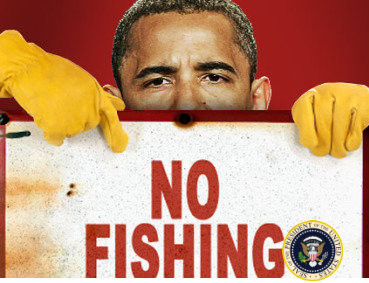 The most valuable fishing port in the U.S. — New Bedford, Mass. — and eight major fishing groups from Florida to Massachusetts are backing an Atlantic States Marine Fisheries Commission (ASMFC) resolution opposing current proposals for a monument off the coast of New England. The fisheries most likely to be affected by a National Monument designation inside the continental shelf, including the valuable red crab, swordfish, tuna, and offshore lobster fisheries, have all come out in support of the ASMFC resolution. Rep. Rob Bishop (R-UT), Chairman of the House Committee on Natural Resources, is in New Bedford today, where he will hear from regional stakeholders about the negative effects a monument would have on commercial fisheries. Multiple environmental groups have been pushing the Obama Administration to use executive authority under the Antiquities Act to designate an offshore monument in the Atlantic. Read the rest here 16:00
The most valuable fishing port in the U.S. — New Bedford, Mass. — and eight major fishing groups from Florida to Massachusetts are backing an Atlantic States Marine Fisheries Commission (ASMFC) resolution opposing current proposals for a monument off the coast of New England. The fisheries most likely to be affected by a National Monument designation inside the continental shelf, including the valuable red crab, swordfish, tuna, and offshore lobster fisheries, have all come out in support of the ASMFC resolution. Rep. Rob Bishop (R-UT), Chairman of the House Committee on Natural Resources, is in New Bedford today, where he will hear from regional stakeholders about the negative effects a monument would have on commercial fisheries. Multiple environmental groups have been pushing the Obama Administration to use executive authority under the Antiquities Act to designate an offshore monument in the Atlantic. Read the rest here 16:00
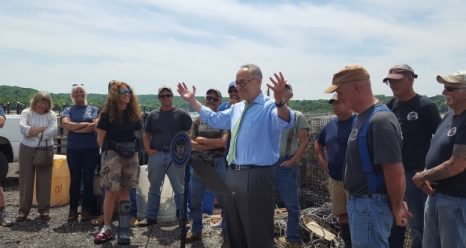
Senator Schumer pushes for new black sea bass commercial fishing regulations
Sen. Charles Schumer was in Northport Wednesday calling for updated fishing industry regulations and to consider allowing commercial fishers to catch black sea bass in June. New York’s sea bass fishing closed on May 31, and does not reopen until July 1 – a schedule Schumer claimed is hurting the industry. “The black sea bass stocks are thriving and the industry is well below its allowable quota so it makes sense to keep open this fishery in June rather than close it,” Schumer said. “We also must change the arbitrary and outdated federal regulations that hamstring the state DEC so we can more coherently and fairly manage the black sea bass fishery.” Citing the NOAA National Marine Fisheries Service, Schumer said the 2016 New York State allocation for black sea bass is approximately 200,000 pounds, yet as of May 25. Yet only about 40,000 pounds have been caught. Read the rest here 13:43
North Pacific Fishery Management Council convenes in Kodiak with Gulf catch shares in focus
The trawl industry already loathes a recent alternative to a North Pacific Fishery Management Council plan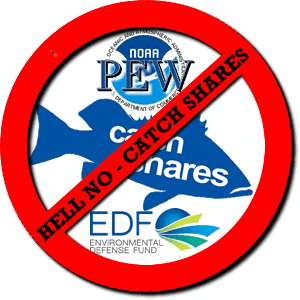 . Now the council could add another. The North Pacific Fishery Management Council will meet in Kodiak from June 6-14 to hear a discussion paper that has enraged the trawl industry since late 2015. A new proposal for “innovative policy,” as referred to in the paper, would give the first catch share allocations to Community Fishing Associations to prevent harmful impacts such as the job losses and high cost of entry that have occurred under previous such programs in halibut and crab. This is an official state position, and the North Pacific council holds a six-member majority of the 11-member body that governs federal Alaska waters. Gov. Bill Walker’s administration prioritizes coastal communities’ economic prospects during the state’s oil-driven financial calamity. Part of that stance concerns keeping the fishing industry, the state’s largest private employer, in Alaskan fishermen’s hands. Read the rest here 08:39
. Now the council could add another. The North Pacific Fishery Management Council will meet in Kodiak from June 6-14 to hear a discussion paper that has enraged the trawl industry since late 2015. A new proposal for “innovative policy,” as referred to in the paper, would give the first catch share allocations to Community Fishing Associations to prevent harmful impacts such as the job losses and high cost of entry that have occurred under previous such programs in halibut and crab. This is an official state position, and the North Pacific council holds a six-member majority of the 11-member body that governs federal Alaska waters. Gov. Bill Walker’s administration prioritizes coastal communities’ economic prospects during the state’s oil-driven financial calamity. Part of that stance concerns keeping the fishing industry, the state’s largest private employer, in Alaskan fishermen’s hands. Read the rest here 08:39
British Columbia’s Canfisco workers seek Ottawa’s help to save jobs
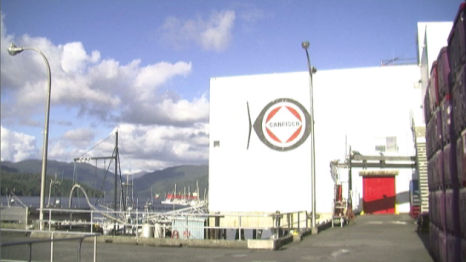 As B.C.’s commercial fishing season gets under way, the union representing workers at B.C.’s last fish cannery has made a public plea to the federal government to save their jobs. In a seven-minute video released on Wednesday, members of UFAWU-Unifor, which represents workers in fishing, processing and transport in B.C., describe the Prince Rupert plant’s history, its connection to First Nations culture and communities and the ripple effects of growing concentration in the fish-processing business. “Our government has failed us. They have allowed north coast herring to be exported to China for processing,” Video, Read the rest here 08:04
As B.C.’s commercial fishing season gets under way, the union representing workers at B.C.’s last fish cannery has made a public plea to the federal government to save their jobs. In a seven-minute video released on Wednesday, members of UFAWU-Unifor, which represents workers in fishing, processing and transport in B.C., describe the Prince Rupert plant’s history, its connection to First Nations culture and communities and the ripple effects of growing concentration in the fish-processing business. “Our government has failed us. They have allowed north coast herring to be exported to China for processing,” Video, Read the rest here 08:04
New England Fishermen needlessly on the hook for uncertainties of stock estimates
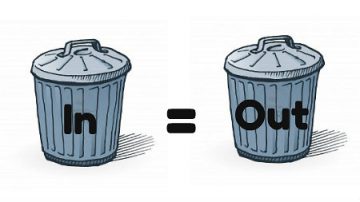 Proper stock assessments are the key to sound fisheries management here in New England. The current and now primarily survey-based assessments are heavy with uncertainty and always assumed to be overstated. Given the changes in the available stock assessment data created by 20 years of regulations, the uncertainty only seems to be increasing. The fact that the R/V Bigelow, the National Oceanic and Atmospheric Administration’s primary fishery research vessel, delayed the survey this year is a significant threat to fishermen: We have been told that there are very few codfish in the Gulf of Maine, but this spring, fishermen have found it impossible to set a net in the water without catching codfish. This does not correlate well with the assessment advice. Read the rest here 07:42
Proper stock assessments are the key to sound fisheries management here in New England. The current and now primarily survey-based assessments are heavy with uncertainty and always assumed to be overstated. Given the changes in the available stock assessment data created by 20 years of regulations, the uncertainty only seems to be increasing. The fact that the R/V Bigelow, the National Oceanic and Atmospheric Administration’s primary fishery research vessel, delayed the survey this year is a significant threat to fishermen: We have been told that there are very few codfish in the Gulf of Maine, but this spring, fishermen have found it impossible to set a net in the water without catching codfish. This does not correlate well with the assessment advice. Read the rest here 07:42
Ten-Year Review for Bering Sea/ Aleutian Islands Crab Ratz Management Program
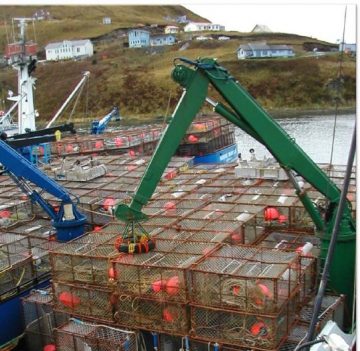 North Pacific Fishery Management Council June 2016 – EXECUTIVE SUMMARY This document is a 10 year review of the Bering Sea/ Aleutian Islands (BSAI) Crab Rationalization (CR) Program. Implemented in 2005, the CR Program is a “voluntary three pie cooperative” program which allocates BSAI crab resources among harvesters, processors, and coastal communities. The CR Program was designed to address conservation and management issues associated with the previous over-capitalized derby fishery, reduce bycatch and associated discard mortality, and increase the safety of crab fishermen by ending the race for fish. The program issued harvest quota shares to vessel owners (License Limitation Program license holders) and captains, as well as processor quota shares to processors based on historic participation to protect investment in and reliance on the program fisheries. Program components include quota share allocation, processor quota share allocation, individual fishing quota and individual processing quota issuance, quota transfers, use caps, crab harvesting cooperatives, protections for Gulf of Alaska groundfish fisheries, an arbitration system, monitoring, economic data collection, and cost recovery fee collection. Read it here 18:32
North Pacific Fishery Management Council June 2016 – EXECUTIVE SUMMARY This document is a 10 year review of the Bering Sea/ Aleutian Islands (BSAI) Crab Rationalization (CR) Program. Implemented in 2005, the CR Program is a “voluntary three pie cooperative” program which allocates BSAI crab resources among harvesters, processors, and coastal communities. The CR Program was designed to address conservation and management issues associated with the previous over-capitalized derby fishery, reduce bycatch and associated discard mortality, and increase the safety of crab fishermen by ending the race for fish. The program issued harvest quota shares to vessel owners (License Limitation Program license holders) and captains, as well as processor quota shares to processors based on historic participation to protect investment in and reliance on the program fisheries. Program components include quota share allocation, processor quota share allocation, individual fishing quota and individual processing quota issuance, quota transfers, use caps, crab harvesting cooperatives, protections for Gulf of Alaska groundfish fisheries, an arbitration system, monitoring, economic data collection, and cost recovery fee collection. Read it here 18:32
Fraserburgh skipper William Whyte, named as country’s best
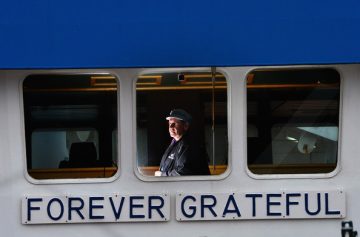 A north-east skipper has been named as the country’s best fisherman. Scottish fishermen took home six gongs in total at this year’s Fishing News Awards, but it was Fraserburgh skipper William Whyte, who helms vessel Forever Grateful, who was named as the country’s best. Mr Whyte, who the awards said showcased determination and skill, was named as Pelagic Fisherman of the Year, while Burnmouth’s John Affleck was named Shellfisherman of the Year. The awards were presented by professional chef and restaurateur Simon Rimmer. Ian Shearer, skipper of Shetland’s Courageous, was named best fisherman under the age of 25, while Billy Hughes, manager of Pittenweem Fishermen’s Mutual Association, took home an award for his lifetime in the industry. Link 15:10
A north-east skipper has been named as the country’s best fisherman. Scottish fishermen took home six gongs in total at this year’s Fishing News Awards, but it was Fraserburgh skipper William Whyte, who helms vessel Forever Grateful, who was named as the country’s best. Mr Whyte, who the awards said showcased determination and skill, was named as Pelagic Fisherman of the Year, while Burnmouth’s John Affleck was named Shellfisherman of the Year. The awards were presented by professional chef and restaurateur Simon Rimmer. Ian Shearer, skipper of Shetland’s Courageous, was named best fisherman under the age of 25, while Billy Hughes, manager of Pittenweem Fishermen’s Mutual Association, took home an award for his lifetime in the industry. Link 15:10
Athearn Marine Agency Boat of the Week: 65′ D.M.R. Fiberglass Stern Trawler, Permits, Detroit 12-V-71 Diesel
 To see specifications, information and 26 photos Click here. To see all the boats in this series, Click here 14:28
To see specifications, information and 26 photos Click here. To see all the boats in this series, Click here 14:28
Bay of Fundy Fishermen want more studies before tidal turbines tested
 The bounties of the Bay of Fundy have sustained us for over 400 years. The Upper Bay of Fundy is an important spawning, nursery and feeding ground for many fish, mammals, and invertebrate species. They include species-at-risk, such as white shark, striped bass, sturgeon and inner Bay of Fundy Atlantic salmon, among others. The is the most important nursery for lobster larvae in Atlantic Canada and fulfills the same function for sea scallops, cod, haddock, gaspereau and many other commercially valuable species that exit the basin through Minas Passage, populating the entire Gulf of Maine. In 2014, $464 million worth of lobster were taken from the Bay of Fundy on Nova Scotia’s side alone. Landings and value were both up significantly in 2015. The three million pounds of allowable scallops fetched about $50 million. In excess of three-quarters of a billion dollars was extracted from Nova Scotia’s waters last year. And it will happen again this year, next year, and every year — truly a renewable resource. Read the Op-ed here 12:22
The bounties of the Bay of Fundy have sustained us for over 400 years. The Upper Bay of Fundy is an important spawning, nursery and feeding ground for many fish, mammals, and invertebrate species. They include species-at-risk, such as white shark, striped bass, sturgeon and inner Bay of Fundy Atlantic salmon, among others. The is the most important nursery for lobster larvae in Atlantic Canada and fulfills the same function for sea scallops, cod, haddock, gaspereau and many other commercially valuable species that exit the basin through Minas Passage, populating the entire Gulf of Maine. In 2014, $464 million worth of lobster were taken from the Bay of Fundy on Nova Scotia’s side alone. Landings and value were both up significantly in 2015. The three million pounds of allowable scallops fetched about $50 million. In excess of three-quarters of a billion dollars was extracted from Nova Scotia’s waters last year. And it will happen again this year, next year, and every year — truly a renewable resource. Read the Op-ed here 12:22
North Carolina Fisheries Association Weekly Update for May 30, 2016
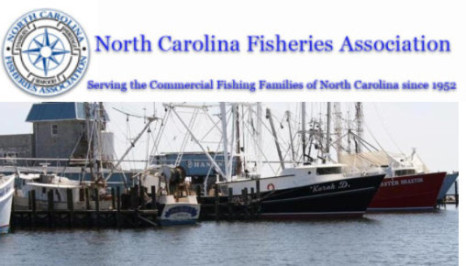 Click here to read the Weekly Update, to read all the updates, Click here 12:05
Click here to read the Weekly Update, to read all the updates, Click here 12:05
Canadian patrols and inspections of NAFO vessels off N.L. coast drop by 50%
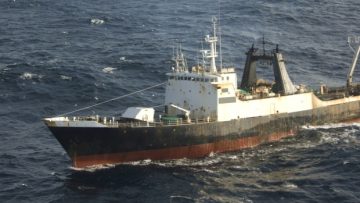 “An analysis of program data identified that patrol days and at-sea inspections in the NAFO regulatory area have decreased by 50 per cent between 2011 and 2015,” an internal DFO report published in March noted. Fisheries and Oceans officials told CBC News this week there are reasons for the reduction. There are now fewer foreign ships fishing in international waters outside Canada’s 200-mile territorial limit, and they are subject to more stringent reporting requirements. That, according to DFO, means fewer ships are necessary to monitor them. “We were comfortable making the decision back in 2012 to reduce our numbers of inspections, based on the fact that we had seen better compliance, smaller number of vessels,” said Allan MacLean, director general of the conservation and protection program at DFO. “It’s kind of like taking the cops off the Trans-Canada Highway on a long weekend, ” Earle McCurdy said. Read the rest here 11:31
“An analysis of program data identified that patrol days and at-sea inspections in the NAFO regulatory area have decreased by 50 per cent between 2011 and 2015,” an internal DFO report published in March noted. Fisheries and Oceans officials told CBC News this week there are reasons for the reduction. There are now fewer foreign ships fishing in international waters outside Canada’s 200-mile territorial limit, and they are subject to more stringent reporting requirements. That, according to DFO, means fewer ships are necessary to monitor them. “We were comfortable making the decision back in 2012 to reduce our numbers of inspections, based on the fact that we had seen better compliance, smaller number of vessels,” said Allan MacLean, director general of the conservation and protection program at DFO. “It’s kind of like taking the cops off the Trans-Canada Highway on a long weekend, ” Earle McCurdy said. Read the rest here 11:31






